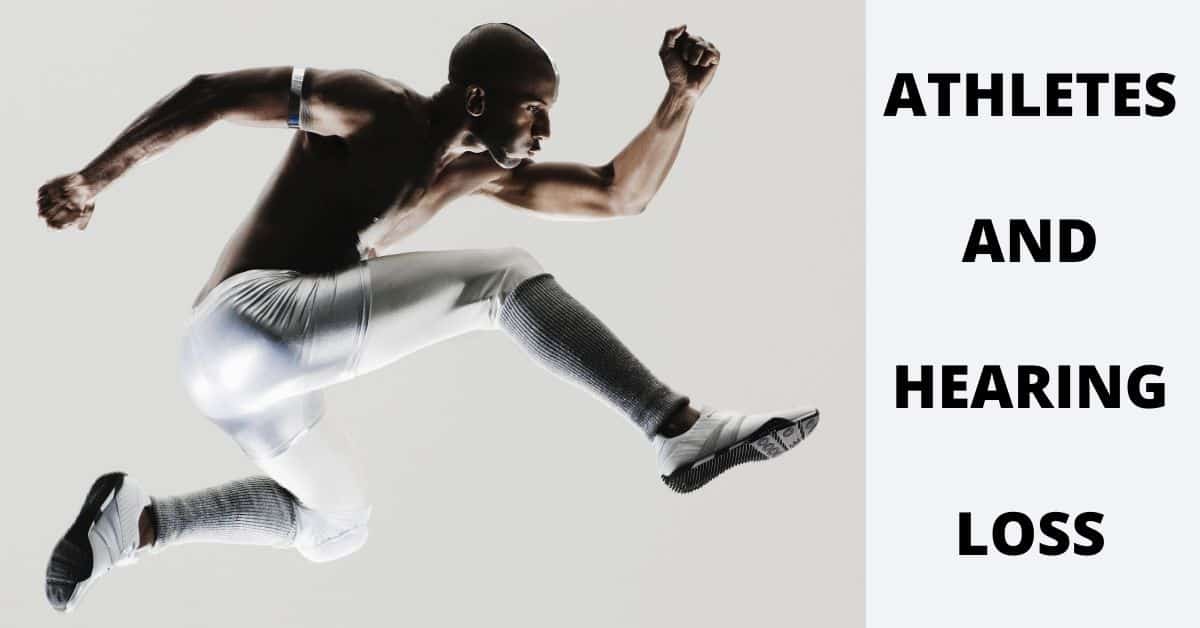Hearing loss is a common health condition that millions of people navigate on a daily basis. According to the National Institute on Deafness and Other Communication Disorders, 1 in 8 people have some degree of hearing loss in one or both ears. Athletes can be particularly vulnerable to developing hearing loss caused by exposure to loud noise and/or injury.
While we are constantly exposed to noise: traffic, alarms, kitchen appliances etc., these varying levels are not typically harmful to our hearing. Volume is measured in units called decibels and the scale includes total silence at 0dB, to a normal conversation at around 50 to 60 dB, and fireworks at 140 dB. Sound above 85 dB is considered potentially dangerous for our hearing and absorbing sound at 120 dB can cause immediate damage. Concerts, operating heavy machinery and sporting events are a major way people are exposed to loud noise. Athletes in particular are exposed to sound that ranges from 85 dB to 118 dB during one game! This consistent exposure to high levels of noise puts them at increased risk of hearing loss.
We also know that engaging in sports also puts athletes at greater risk of personal injury. But what is less known is that these injuries can impact hearing health. Concussions are an incredibly common injury that athletes experience. The pressure from being struck in the head can damage the eardrum and/or outer ear which are important components of how absorb and process sound.
To understand how exposure to loud noise and injury can lead to hearing loss, it is critical to know how hearing works and the ways that athletes can protect themselves!
Understanding Hearing Loss
The sense of hearing, or our auditory system, involves a complex process that requires the undisrupted function of the ears. Our ears consist of three main components:
- Outer Ear: consists of the ear cartilage, the most visible portion of our ears, the ear canal, and eardrum which separates the outer ear from the middle ear.
- Middle Ear: consists of three tiny bones that are connected (known as the ossicles) and the eustachian tube which is responsible for equalizing pressure in the ear.
- Inner Ear: includes the cochlea which is filled with thousands of hair cells and fluid, as well as nerve pathways that lead to the brain.
The outer ear absorbs sound from the environment which travels down the ear canal and lands on the ear drum causing it to vibrate. This triggers the ossicles which helps push the soundwaves further into the inner ear. The cochlea is then activated and the movement of the hair cells and fluid help translate the soundwaves into electrical signals that travel through the nerve pathways and reach the brain. The brain is then able to process the sound which is how we are able to make sense of what we hear.
The louder the noise, the more intense the soundwaves are that cause all the movement in the middle and inner ear. Loud sound waves cause the hair cells in the inner ear to vibrate strongly which can damage them over time. These hair cells can lose sensitivity and gradually become ineffective. This type of damage is permanent as these hair cells do not regenerate.
Protect Your Hearing
There are useful ways that athletes can protect their ears from being harmed by dangerous levels of noise. A few examples include:
- Wear protective gear: earmuffs and earplugs serve as a physical barrier and reduce the amount of loud noise you absorb. Earplugs can decrease sound to 20 to 30 decibels.
- Noise cancelling headphones: listening to music during workouts and pregame routines is common. Using noise cancelling headphones helps to reduce background noise which prevents you from increasing the volume on your headphones.
- Get hearing tested: it is important to assess where your hearing is at. Hearing tests are a relatively quick and noninvasive way to identify any impairment, the degree, and specific type of hearing loss you may be experiencing. This also informs effective treatment which can drastically improve your hearing health!
Athletes face increased risk of damaging their hearing health. It is crucial to be proactive and take the measures to ensure that you are protecting your ears and hearing!

